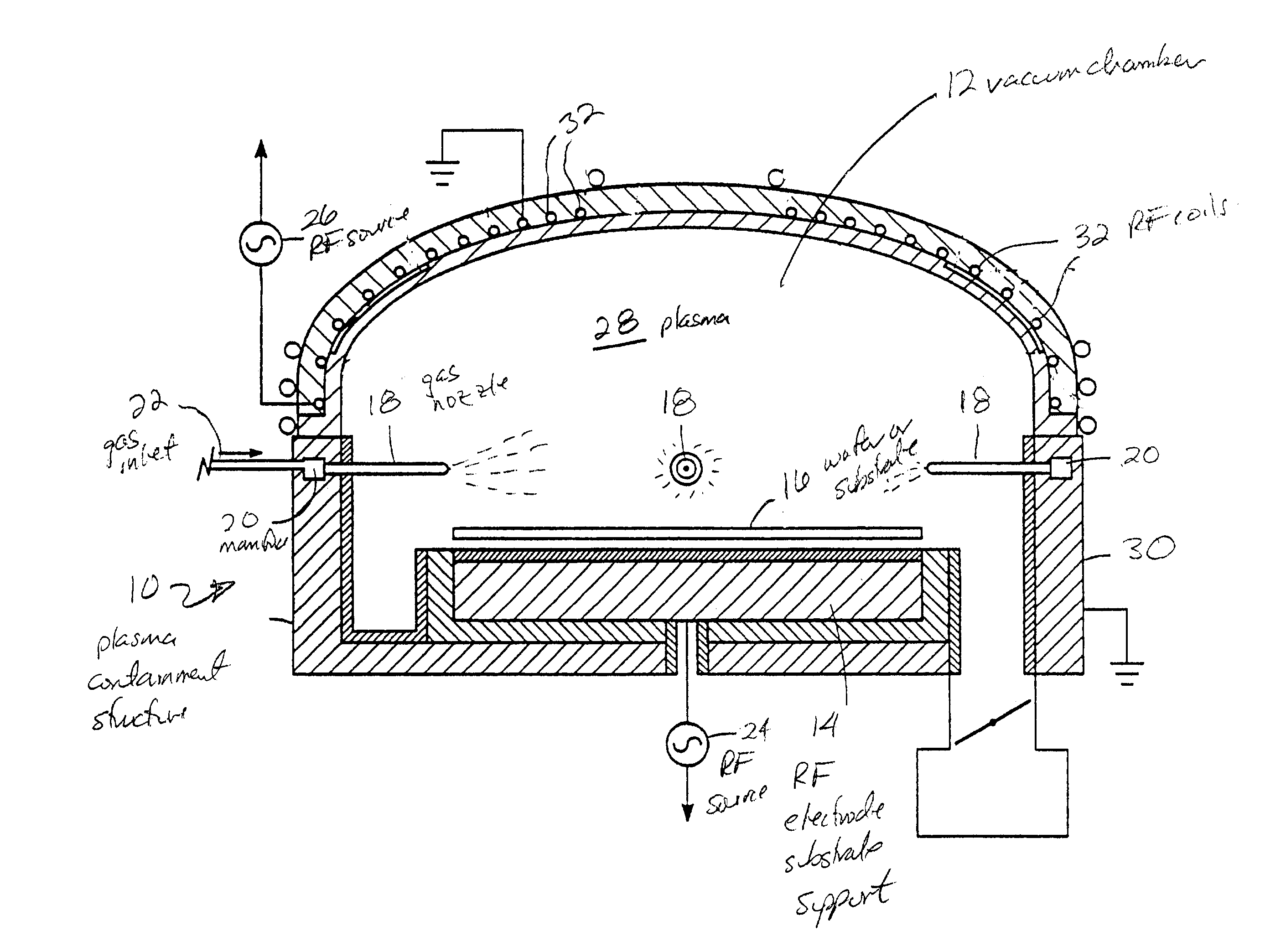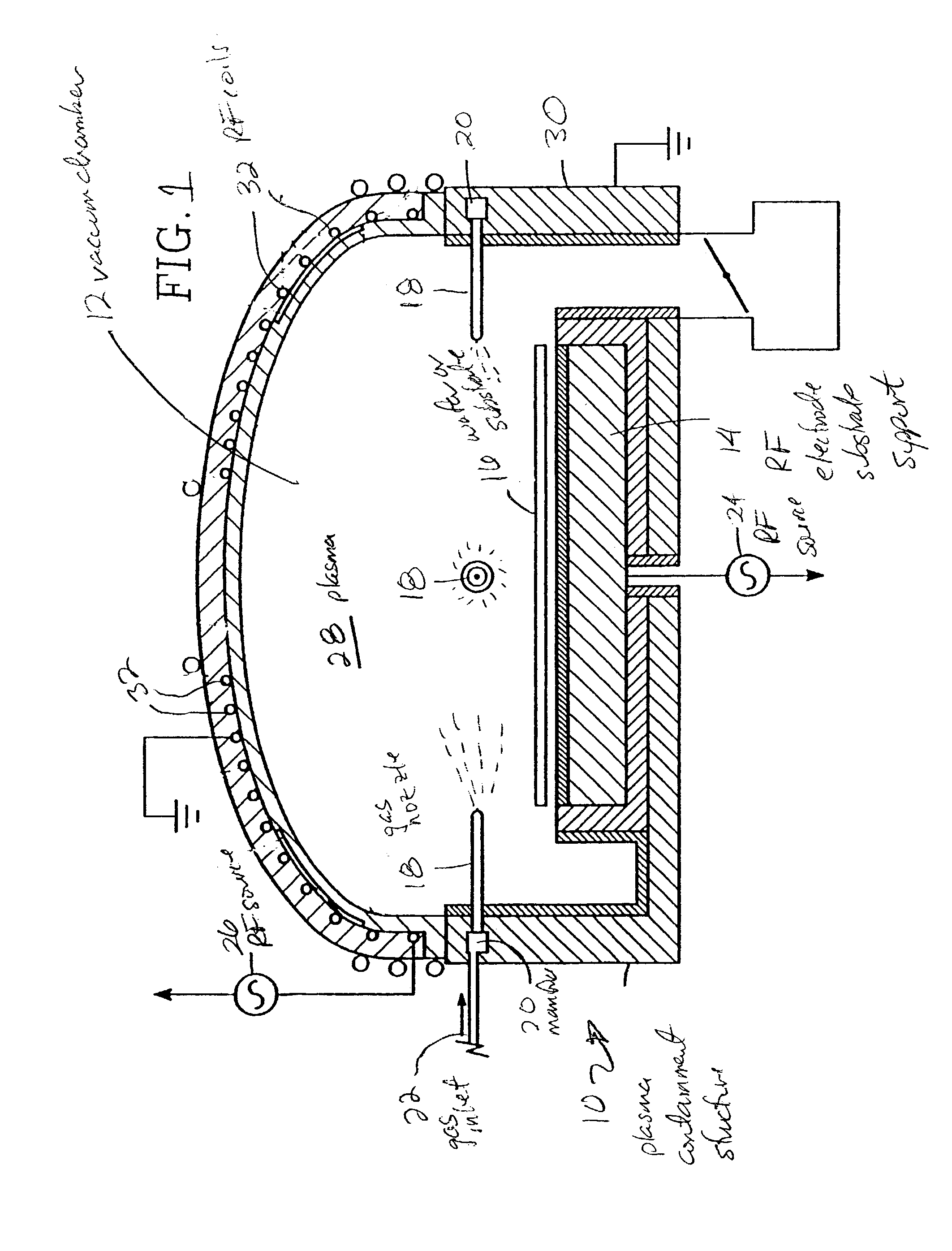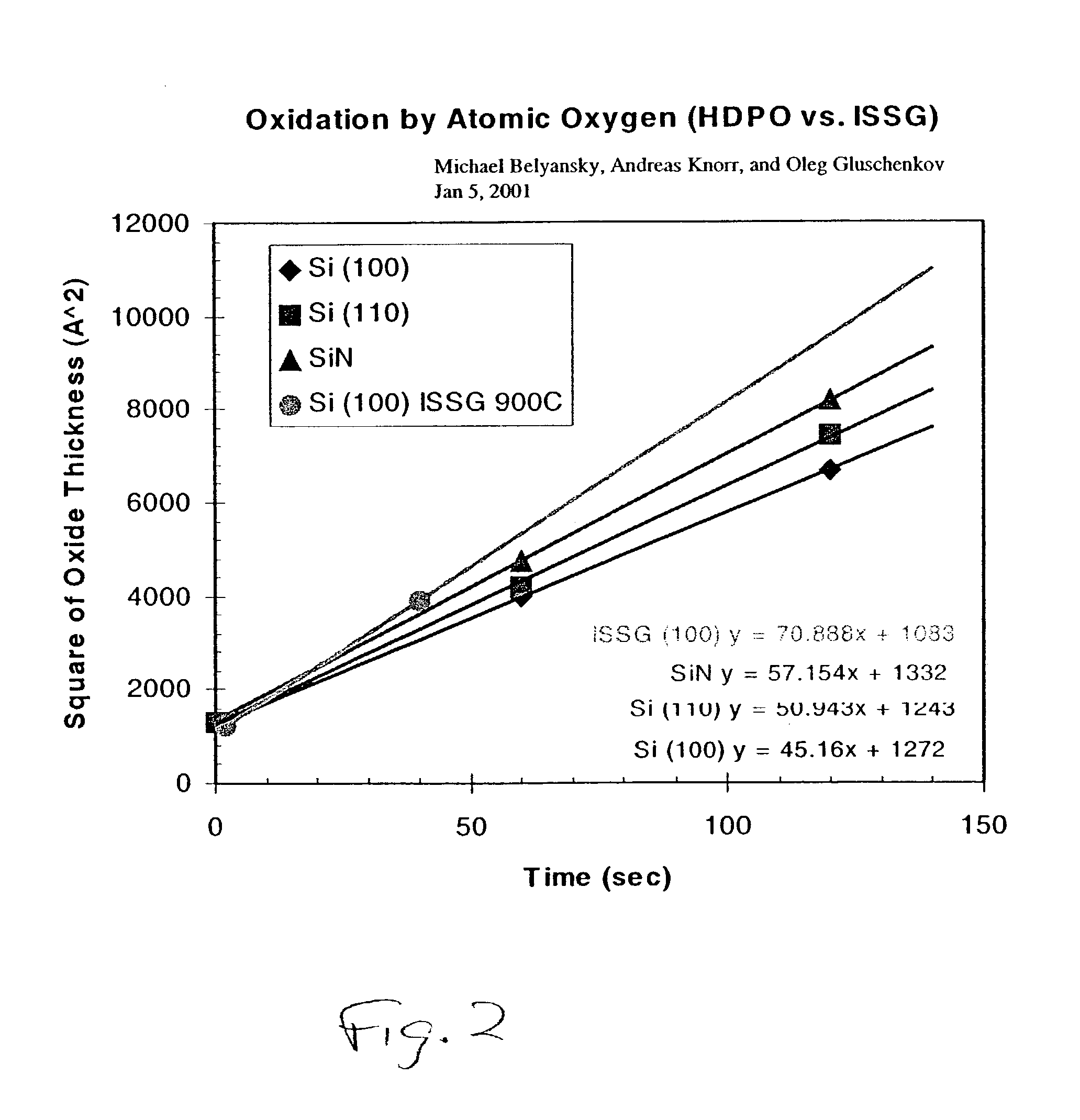High density plasma oxidation
a plasma oxidation and high density technology, applied in the field of high density plasma oxidation, can solve the problems of high undesirable single-wallet oxidation process longer than 5 minutes, inability to quickly recombine, and inability to provide a uniform distribution of atomic oxygen over a relatively large substrate (200-mm in diameter and larger) , to achieve the effect of high oxide uniformity
- Summary
- Abstract
- Description
- Claims
- Application Information
AI Technical Summary
Benefits of technology
Problems solved by technology
Method used
Image
Examples
Embodiment Construction
)
[0025]In describing the preferred embodiment of the present invention, reference will be made herein to FIGS. 1 and 2 of the drawings in which like numerals refer to like features of the invention. Features of the invention are not necessarily shown to scale in the drawings.
[0026]The present invention provides a method and system for oxidizing semiconductor substrates which utilizes a readily commercially available high density plasma reactor of the type normally used for chemical vapor deposition (CVD). The substrate or wafer can be comprised of either conductors (e.g., elemental metals, metal suicides, certain metal nitrides, and the like), semiconductors (e.g., Si, Ge, SiGe, SiC, SiGeC, or any of III-V or II-VI compounds), insulators and insulating ceramics (e.g. glass, sapphire, silicon nitride, boron nitride, etc.), and polymers. The substrate can have multiple layers of these materials (e.g. silicon-on-insulator (SOI) and silicon-germanium-on-insulator (SGOI) substrates, stra...
PUM
| Property | Measurement | Unit |
|---|---|---|
| surface area | aaaaa | aaaaa |
| electron density | aaaaa | aaaaa |
| mole fraction | aaaaa | aaaaa |
Abstract
Description
Claims
Application Information
 Login to View More
Login to View More - R&D
- Intellectual Property
- Life Sciences
- Materials
- Tech Scout
- Unparalleled Data Quality
- Higher Quality Content
- 60% Fewer Hallucinations
Browse by: Latest US Patents, China's latest patents, Technical Efficacy Thesaurus, Application Domain, Technology Topic, Popular Technical Reports.
© 2025 PatSnap. All rights reserved.Legal|Privacy policy|Modern Slavery Act Transparency Statement|Sitemap|About US| Contact US: help@patsnap.com



